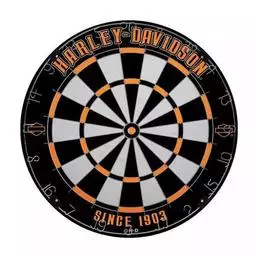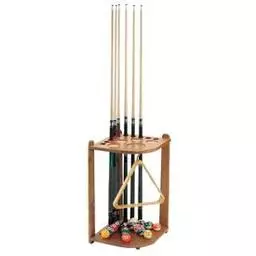|
What's the difference in dart materials? - Kevin S., New Jersey
Metals vary in density and weight, and so some metals are more ideal for darts than others. Lower priced recreational darts often use common metals like brass and copper. These metals are not very dense, so the heavier the dart, the thicker or longer it tends to be. However, serious darters prefer darts made out of tungsten, which is a strong, dense metal, allowing for barrels and shafts that are slim in design.
How do I know which type of dart tip I need? - Sam W., Florida
Steel tip darts are mostly used with bristle dartboards and can only be used on electronic dart boards with BristleTech surfaces. Steel tip darts have a very sharp steel point to stick in the fiber of a bristle board. They can be complex with as many as five completely separate removable parts, and can be tuned for performance. Many models are available in different weights. Steel tip darts can be made of brass, nickel - silver, tungsten, and copper.
Soft tip darts are mostly used with electronic dart boards. Soft tip darts have a flexible, plastic tip on the end to easily lodge into the holes on electronic dartboards. Usually lighter than steel tip darts, soft tip darts can be weighted differently, and be as complex. Soft tip darts can be made of plastic, brass, nickel - silver, tungsten, and copper.
Should dart weight matter to me? Hank F., Oregon
To the occasional player, dart weight will probably make no difference. Many serious dart players prefer specific dart weights that feel most comfortable when they throw. Some dart players will even buy kits to add a gram or two to their favorite darts. Generally, soft tip darts range from 14 to 20 grams, and steel tip darts range from 18 to 26 grams.
What dart flight do I need, are they all the same? - Paul Z., New York
The purpose of a dart flight is to provide drag (not lift); its job is to keep the tail tracking the point while the dart fights the good fight against gravity on its way to the dartboard. Smooth, ribbed, dimpled or otherwise, they all do the same thing with slight variations. Try throwing a dart without them and you'll understand better. Heavier darts usually need larger surface area flights, commonly known as "standards." Lighter darts with less mass can be thrown with smaller area flights, commonly known as coal-crackers or "speed flights." Speed flights have smaller wings, which can help promote tighter groupings and decrease the chances of another dart striking the previous simply by the fact that there is less surface area to hit.
What is a barrel knurl? - Melissa W., Denver
The knurl is essentially the engraved pattern or grip on the barrel of a dart. One of the most important features of a dart, that determines quality and worth, is the barrel's grip. If you have the best grip, you are going to get three things: control, consistency and accuracy. Darts come in a wide variety of knurls; which one is best for you will depend on your personal preference.
What is a retractable point on a dart? - Ben T., Georgia
Some steel tip darts offer retractable points. When a dart strikes the wire (also called the "spider") on a bristle board, the point of the dart retracts into the dart body. This allows the point to slip off the wire while the forward motion of the dart body hammers the point into the target, virtually eliminating bounce outs.
Do I really need a dart tool? - Mary M., Florida
Dart tools are used for steel tip darts. These tools help you tighten tips and metal shafts, spread metal shafts for easy insertion of flights, and reshapes metal shafts.
|




